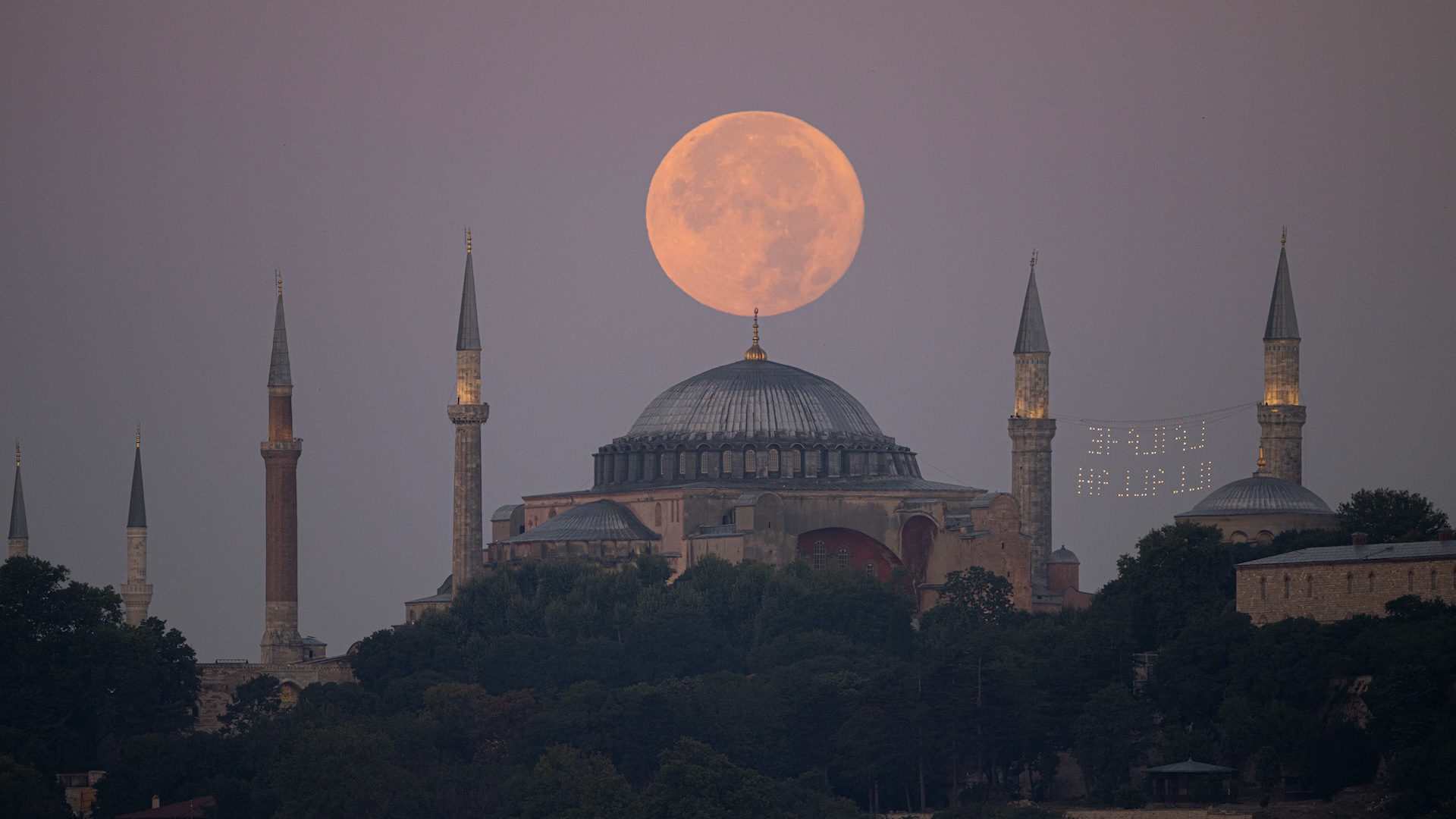
The biggest and brightest full moon of 2024 so far will rise today (Aug. 19), but its unusual name needs explaining. Although August's full moon is typically called the "Sturgeon Moon," this month, it's also a "blue supermoon."
The Sturgeon Moon, at its fullest on Aug. 19 at 2:25 p.m. EDT, is called a blue moon because of an astronomical quirk. There are two types of blue moons: a monthly blue moon (the second full moon in a month) and a seasonal blue moon (the third of four full moons in the same astronomical season). Since the summer solstice on June 20, there have been full moons on June 22 and July 21. The Sturgeon Moon on Aug. 19 and the following full moon, the Harvest Moon, on Sept. 18 will occur before the equinox on Sept. 22.
Blue moons of either type occur once every two to three years, according to NASA. The last seasonal blue moons were in October 2020 and August 2021, and the next seasonal blue moon will occur in May 2027, according to timeanddate.com
Best seen rising above the eastern horizon at moonrise on Monday, the Sturgeon Moon will also appear bright on Tuesday. Stargazing binoculars and backyard telescopes aren't necessary to enjoy the full moon, but may help reveal details on the lunar surface not visible to the naked eye.
Related: Perseid meteor shower rains 'shooting stars' over Stonehenge in glorious astrophotography image
August's full moon is named for sturgeon fish that are found in the Great Lakes at this time of year, according to timeanddate.com. The Anishinaabeg people call the August moon Minoomini Giizis, which means "the Grain (Wild Rice) Moon," according to the Center for Native American Studies.
This month's full moon is also a supermoon — a consequence of the moon's monthly orbit around Earth not being a perfect circle. Each month, the moon reaches its closest point to Earth, known as perigee. When perigee coincides with a full moon, it's a supermoon.
There will be four supermoons in 2024, beginning with the Sturgeon Moon. The closest full moon of the year will be the Hunter's Moon on Oct. 17. The next full moon will be the Harvest Moon on Sept. 17. In addition to being one of the best-known full moons of the year, part of the 2024 Harvest Moon will pass through Earth's shadow during the night, causing it to become partially eclipsed by Earth.







